MúzeumCafé Books #1
Museum – A House for Learning
Museum Theoretical Case Studies
Museum – A House for Learning
Museum Theoretical Case Studies
By Péter György
·
German Design Award 2015
13 February 2015, Frankfurt, Trade Fair
Excellent Communications Design – Books and Calendars
13 February 2015, Frankfurt, Trade Fair
Excellent Communications Design – Books and Calendars
Gold
Good Design Award 2014
14 December 2014, Chicago, The Chicago Athenaeum: Museum of Architecture and Design
Graphics/Packaging
2014 GOOD DESIGN™ Award Winner
Red Dot Design Award 2014
24 October 2014, Berlin, Konzerthaus
Communication Design
Winner
designaustria
Joseph Binder Award 2014
23 October 2014, Vienna, MuseumsQuartier
Editorial Design
Silver
International Society of Typographic Designers
ISTD International Typographic Awards
3 October 2014, Bexhill on Sea, East Sussex, De La Warr Pavilion
Books category
Certificate of Excellence
Certificate of Excellence
93. Art Directors Club Annual Awards
7–9 April 2014, Miami, ADC Festival
Design category
Silver cube winner
7–9 April 2014, Miami, ADC Festival
Design category
Silver cube winner
·
The editorial board of MúzeumCafé, the magazine of Hungarian museums under the editorship of the Museum of Fine Arts in Budapest, launched a series of volumes on the museum profession in 2013. The volumes are non-profit products filling a gap, works containing studies by Hungarian museum professionals, academic staff and researchers.
Péter György, university professor and Director of the Institute of Art Theory and Media Studies of the Faculty of Arts, Eötvös Loránd University, and Doctor of the Hungarian Academy of Sciences, is the author of the first volume in the series. He writes the following about the book in the preface.
“This volume includes 17 museum historical and critical studies, as well as essays, which analyse the theoretical terms of the institution’s practice. A museum is a house for learning, which operates in varied urban and cultural spaces in different eras. My recurring question concerns how the different contexts overwrite the notion of a museum, how it can remain partly the same under the pressures and possibilities. This volume presents memories and lessons of travels. I hope I am not mistaken in believing that the reader would benefit from all I have learnt, in discussions, questions and answers alike.”
In each volume the books’ layout artists introduce the work of an artist belonging to the current young generation of typeface designers. We would like to present these designs at an exhibition together with applications. The first volume features the Frustro Outline typeface of Márton Hegedűs (b.1987). The work of this student at the Hungarian University of Fine Arts was inspired by the art of Escher. An important aim with the series of MúzeumCafé Books is to support renewal of the Hungarian culture of books, which enjoys a great tradition, and we hope that our readers also recognize the significance of the quiet yet visible typographical variations that affect a book in its entirety as an object.
The book is printed with the use of FM halftone screening, duplex printing and the application of Pantone Cool Gray 8U and Pantone 805 U direct colours.
·
Imprint
Author – Péter György
Editor – Orsolya Radványi
Book design – Lead82: Dávid Lencsés-Tóth, Dániel L. Németh, Zalán Péter Salát, Viktor Suszter
Artistic Director – Zalán Péter Salát
Picture Editors – Máté Kovalik, Zalán Péter Salát
Image processing – Dávid Lencsés-Tóth
Copy editor – Árpád Szendrői
Assistant – Zsuzsanna Patai
Graphics – Máté Dobesch
Chronicle – Hoefler and Frere-Jones
Frustro – Márton Hegedűs
JAF Bernina – Tim Ahrens
Printed by – EPC Nyomda, Budaörs
Manager – László Mészáros
Publisher – Dr. Baán László, Director, Museum of Fine Arts, Budapest,
April 2013
·
Technical Details
Number of pages – 408 pages
Cover and Binding – The book block is sewed with thread, and covered by an 3.5 mm Eska grey table. There is a plus 300 gramm soft cardboard cover in the inside.
Trimmed Size – 150x285 mm
Language – Hungarian
Paper– Munken Polar 130 gramm
·
Extra specifications
– The book is printed with the use of FM halftone screening
– The edges of the book are painted with Pantone 805 U colour
– Screen printing on the edge of the book
– The photos were printed with Duotone technique, with the combination of CMYK Black and Pantone Cool Grey 8 U colours.
– Blind press embossing on the cover and screen printing.
– Blind press embossing on the cover and screen printing.
ISBN 978-963-89775-0-2
1. Edition 04/2013
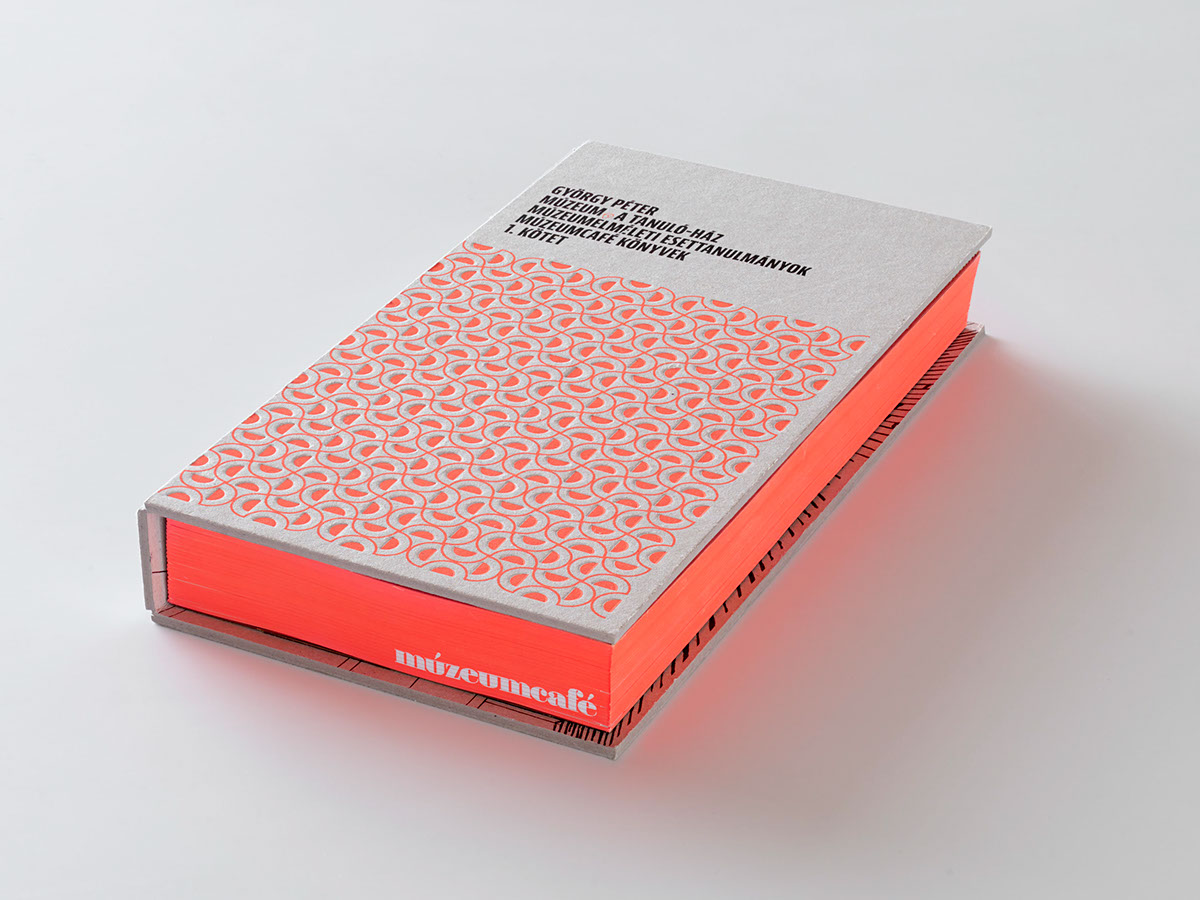
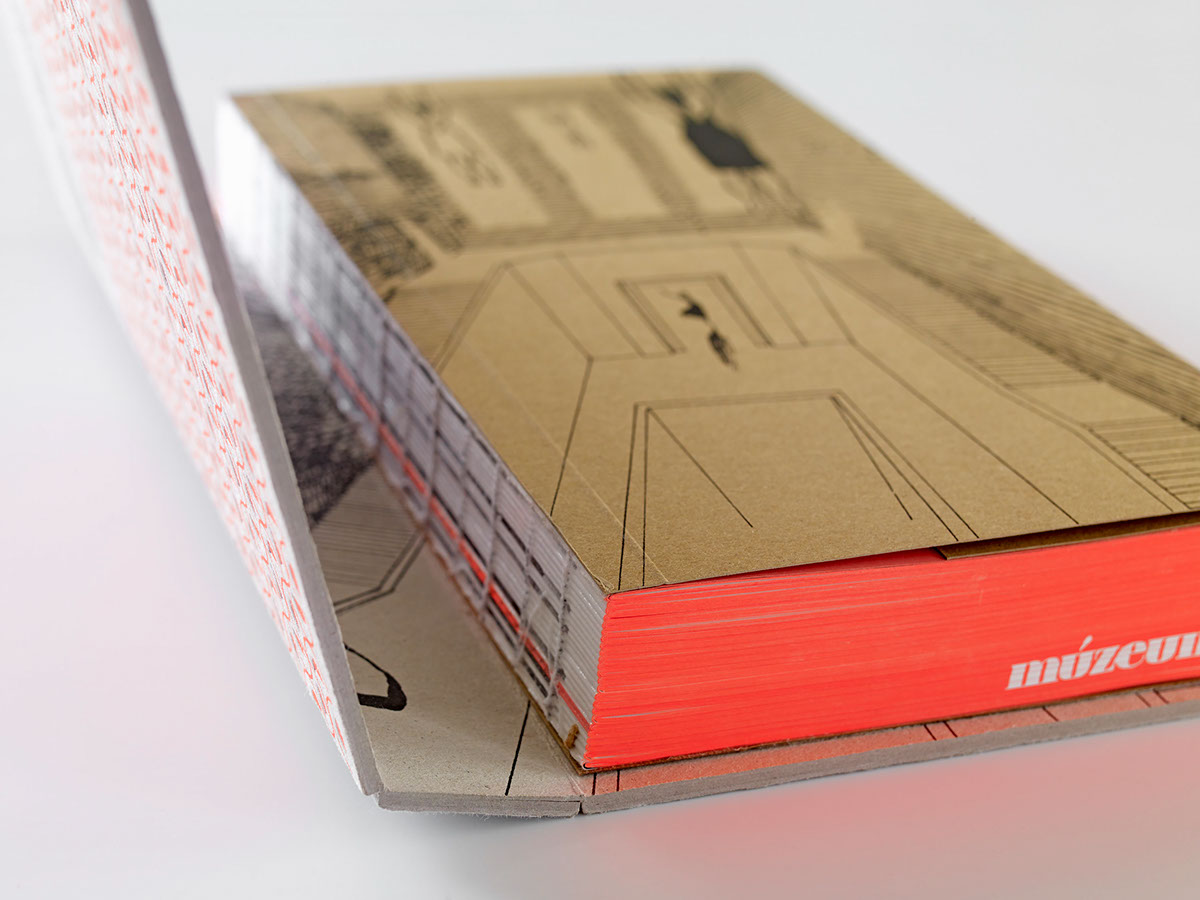
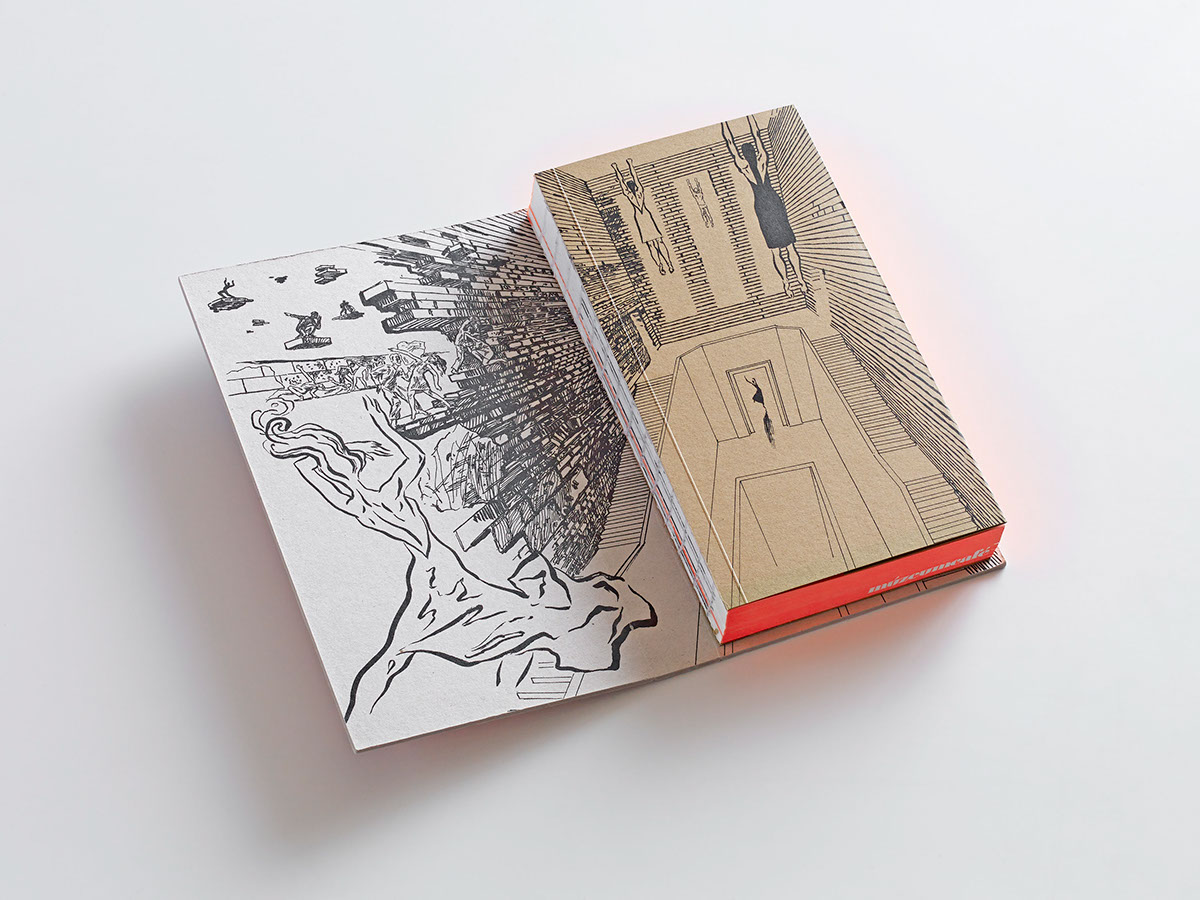
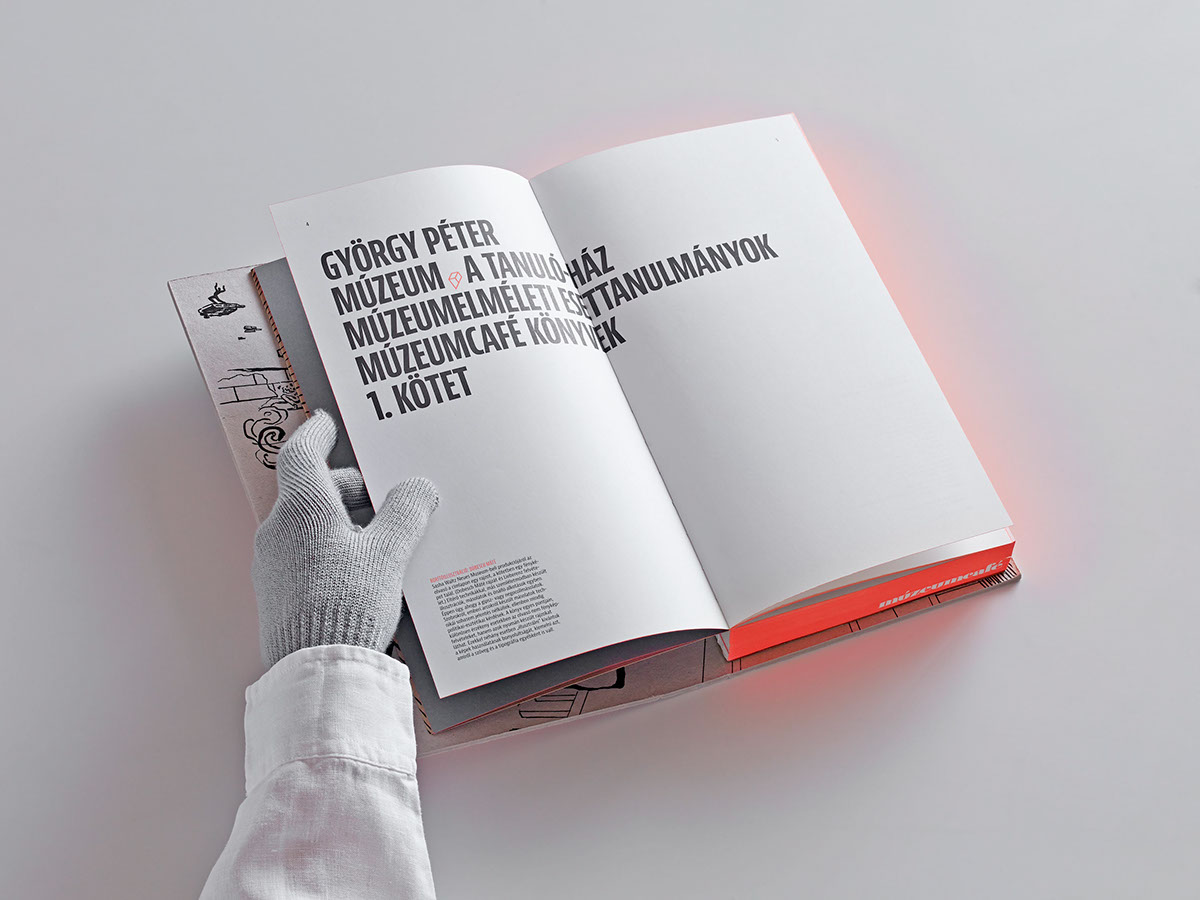
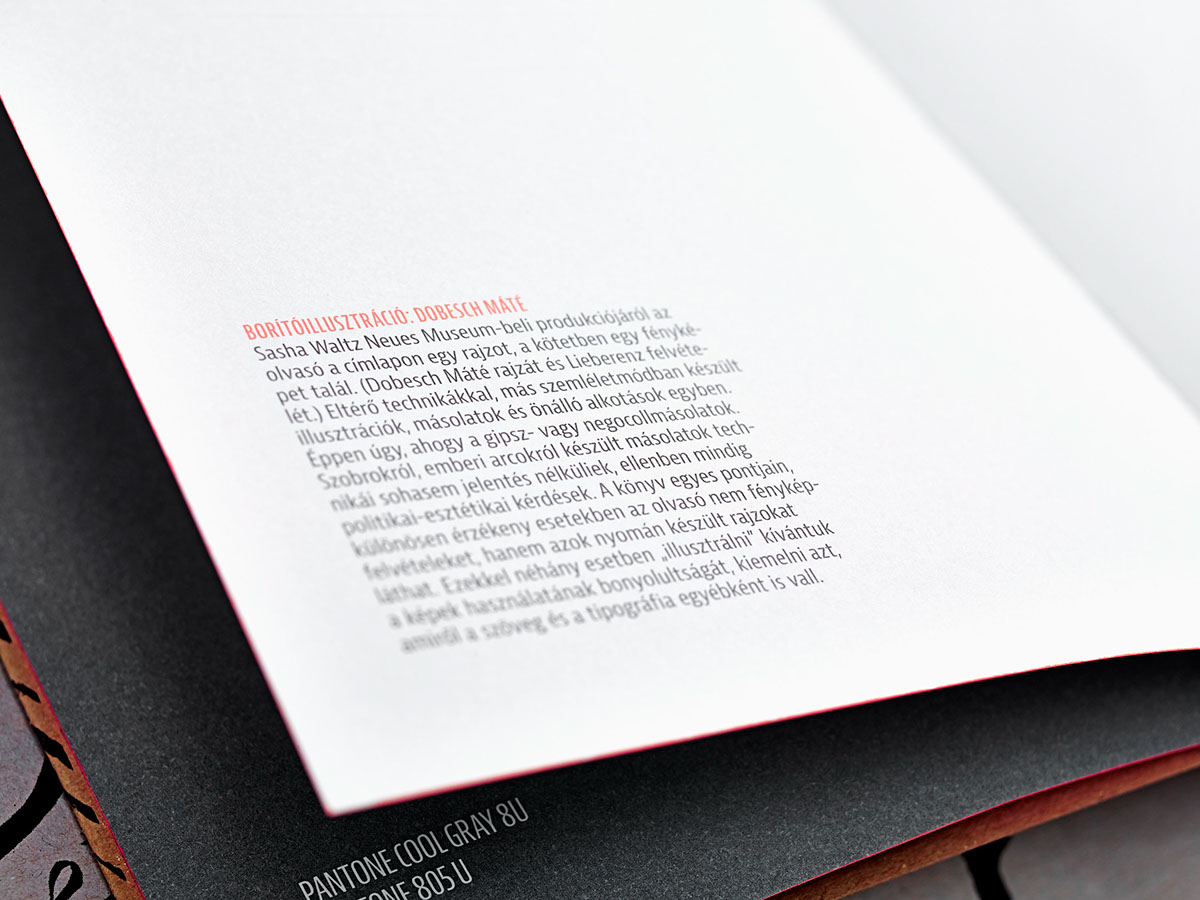
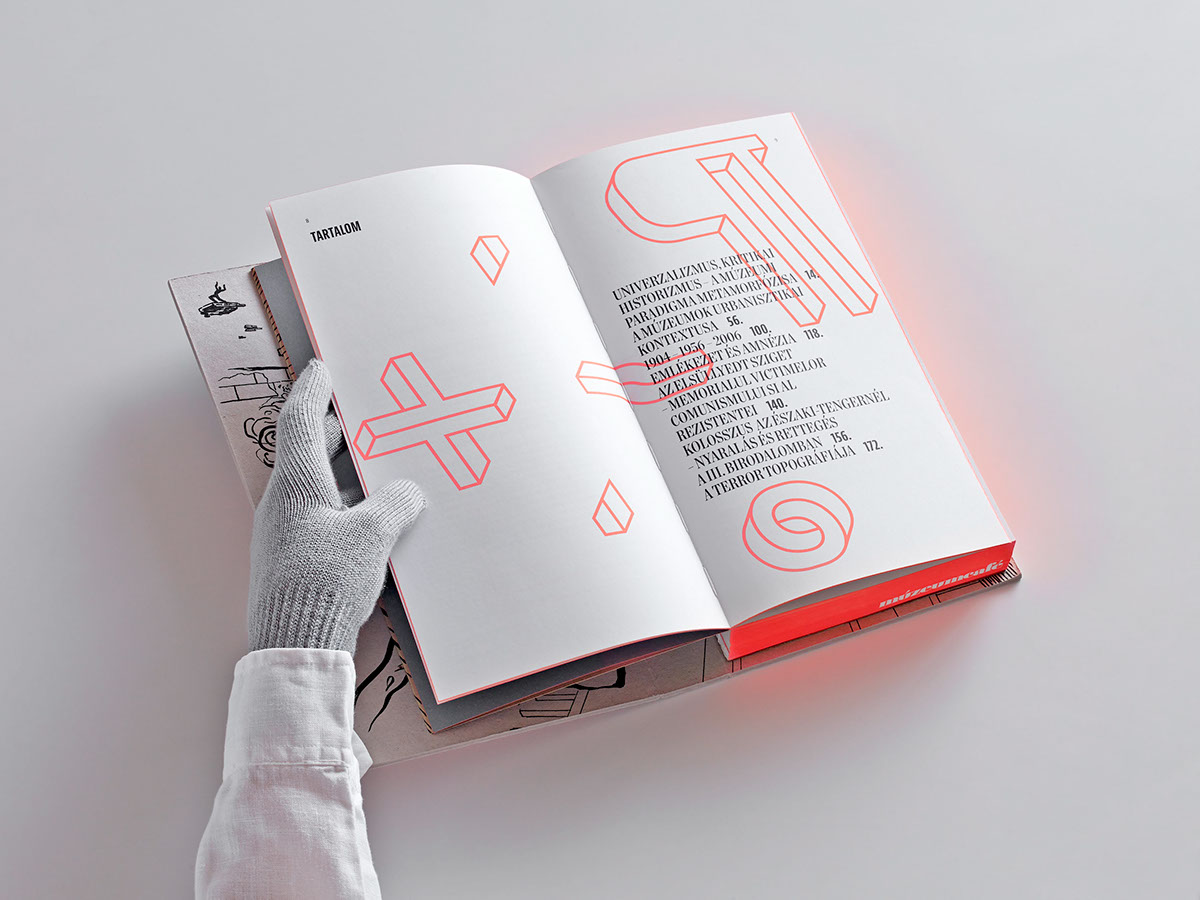
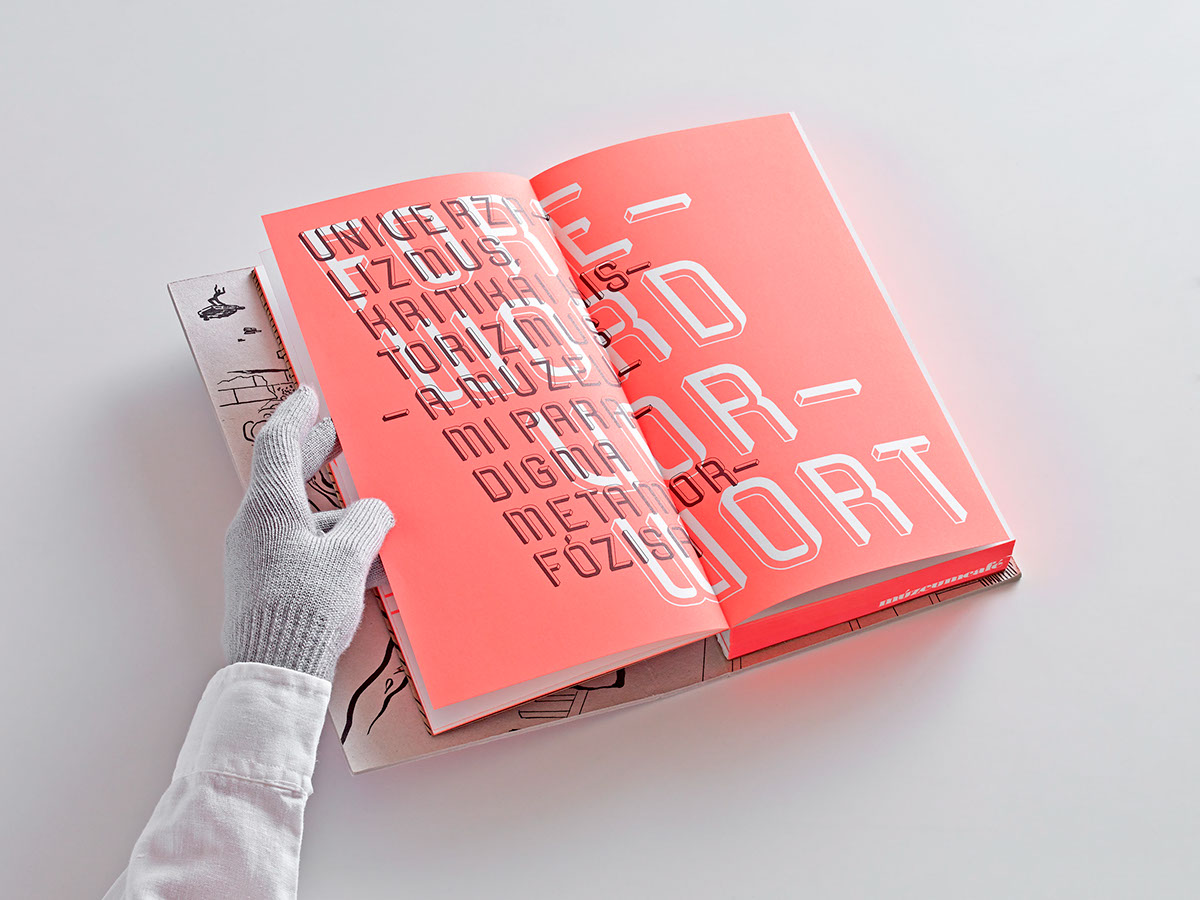
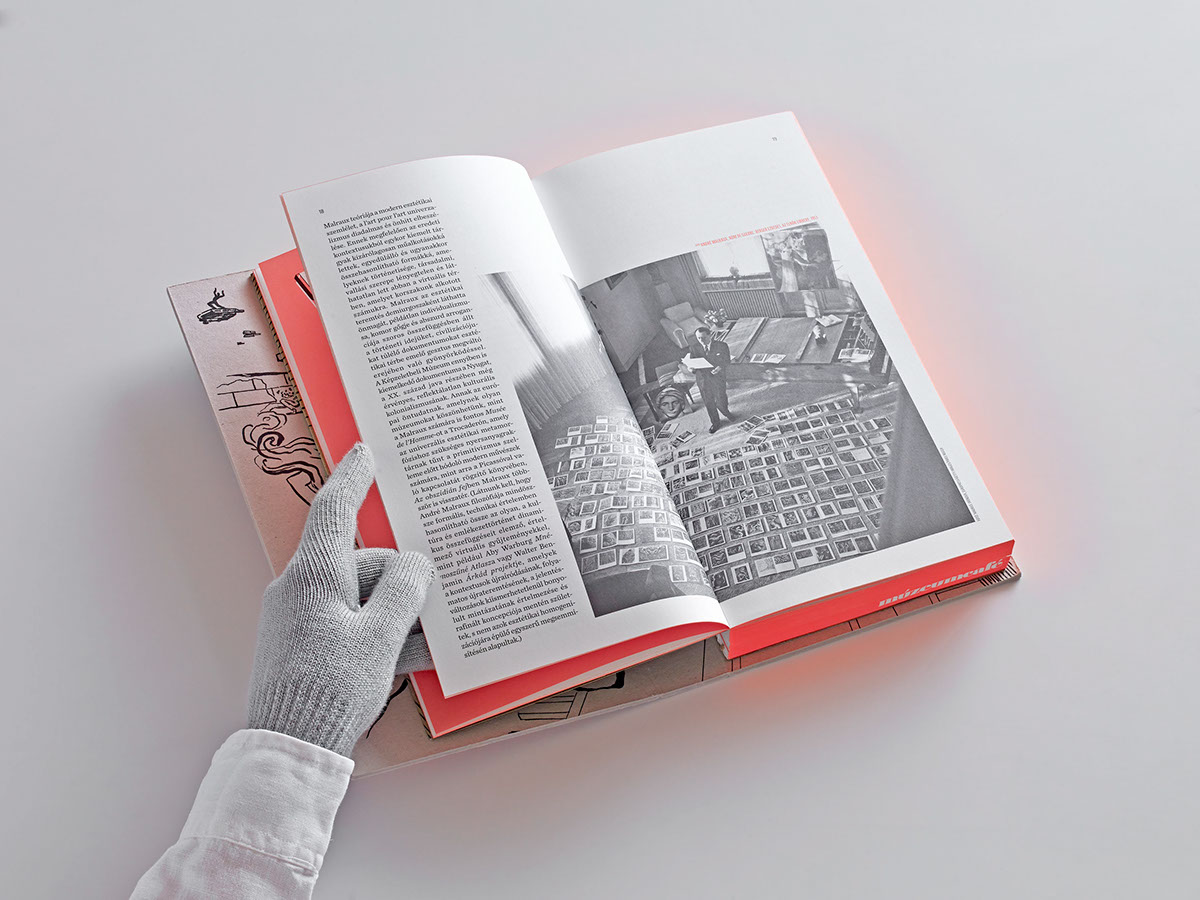
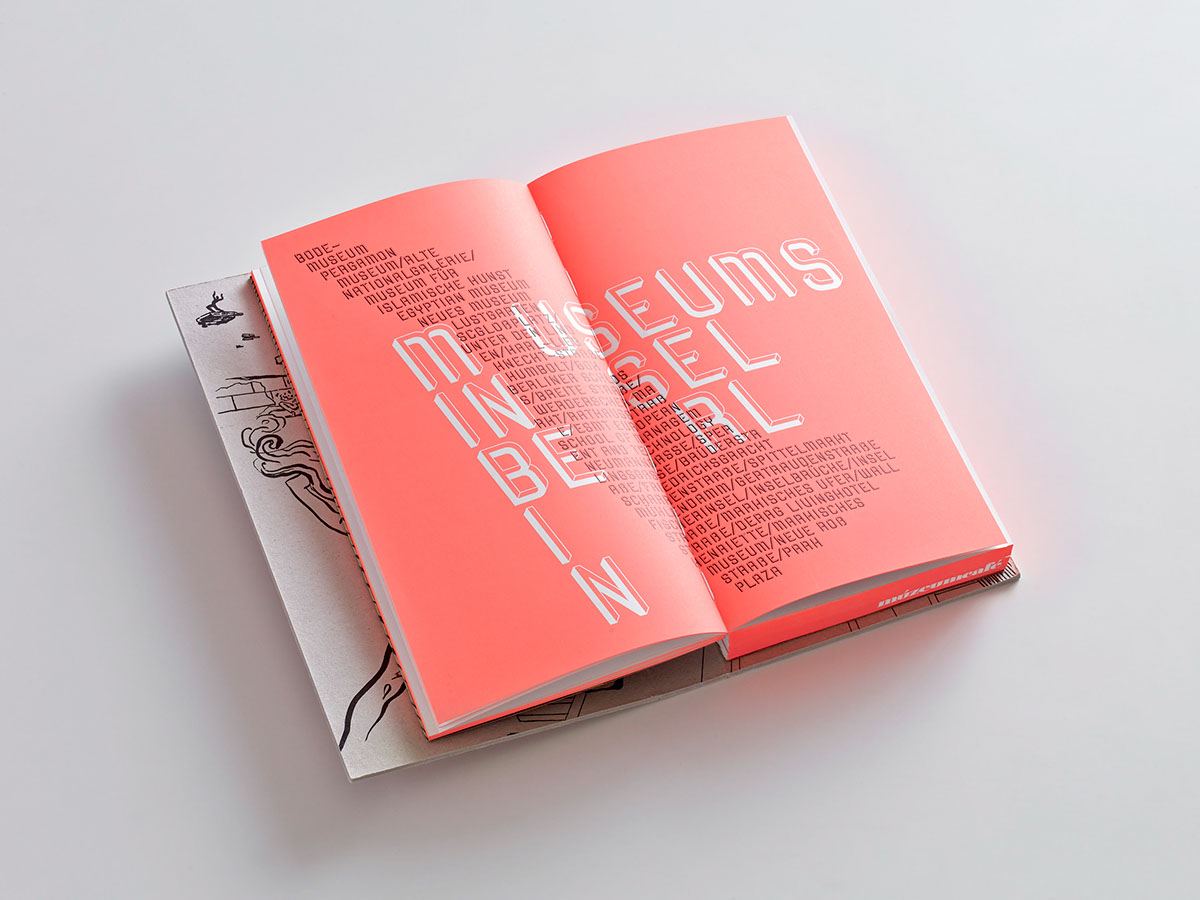
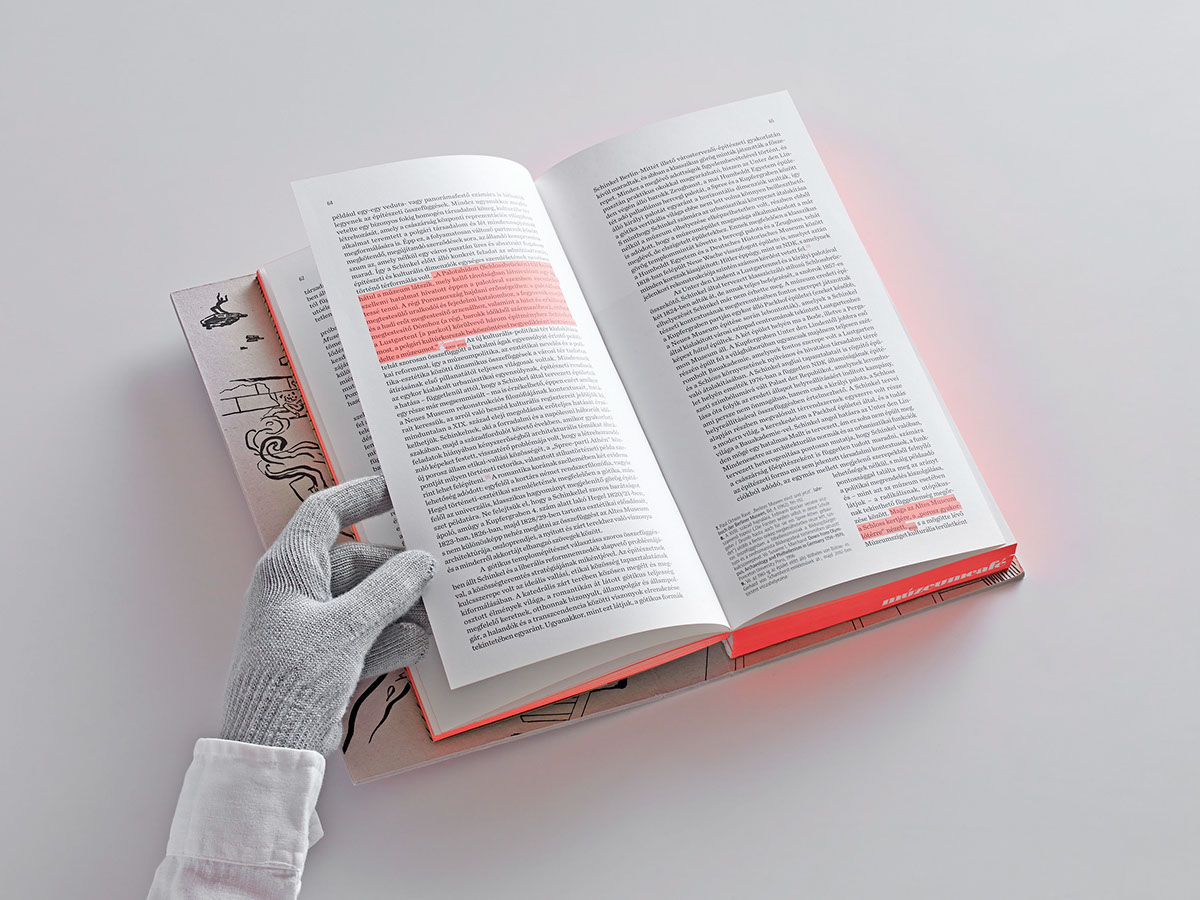
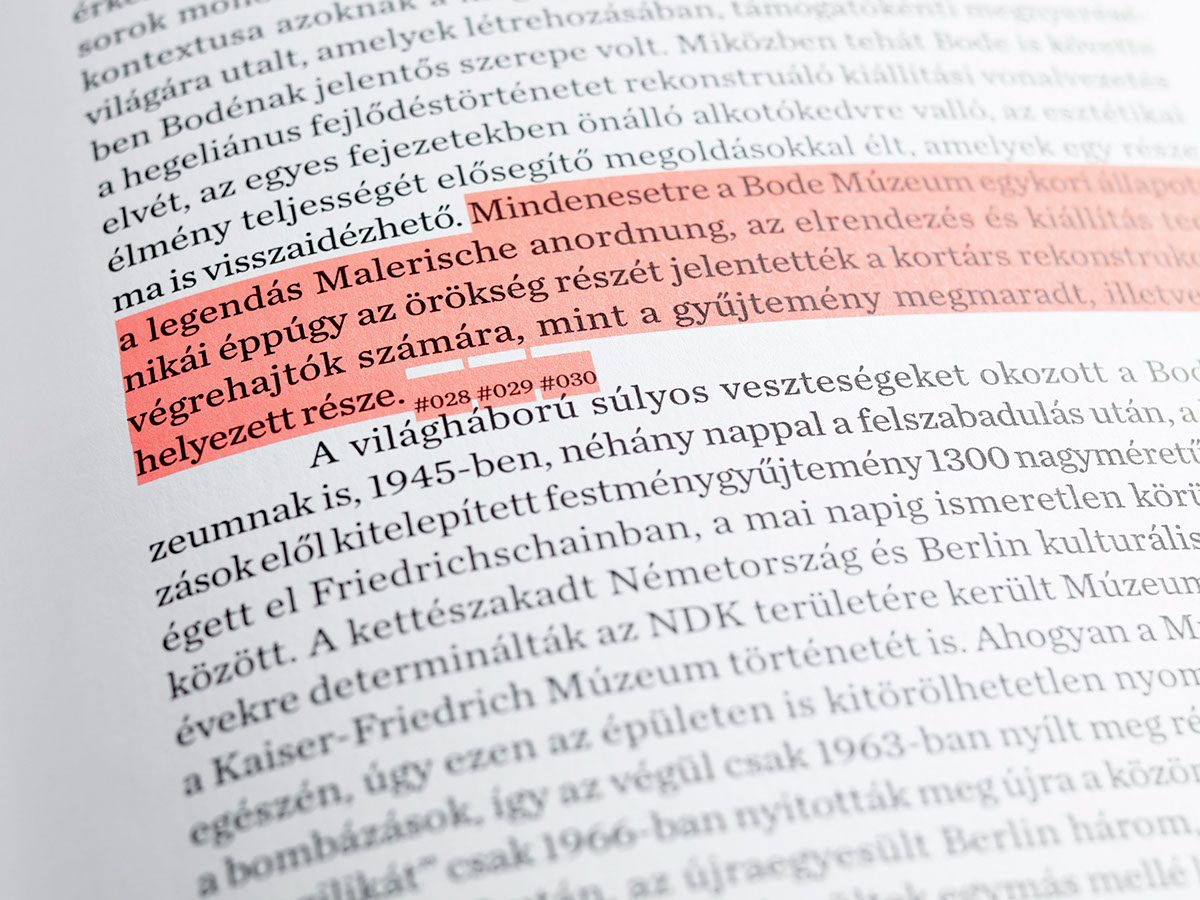
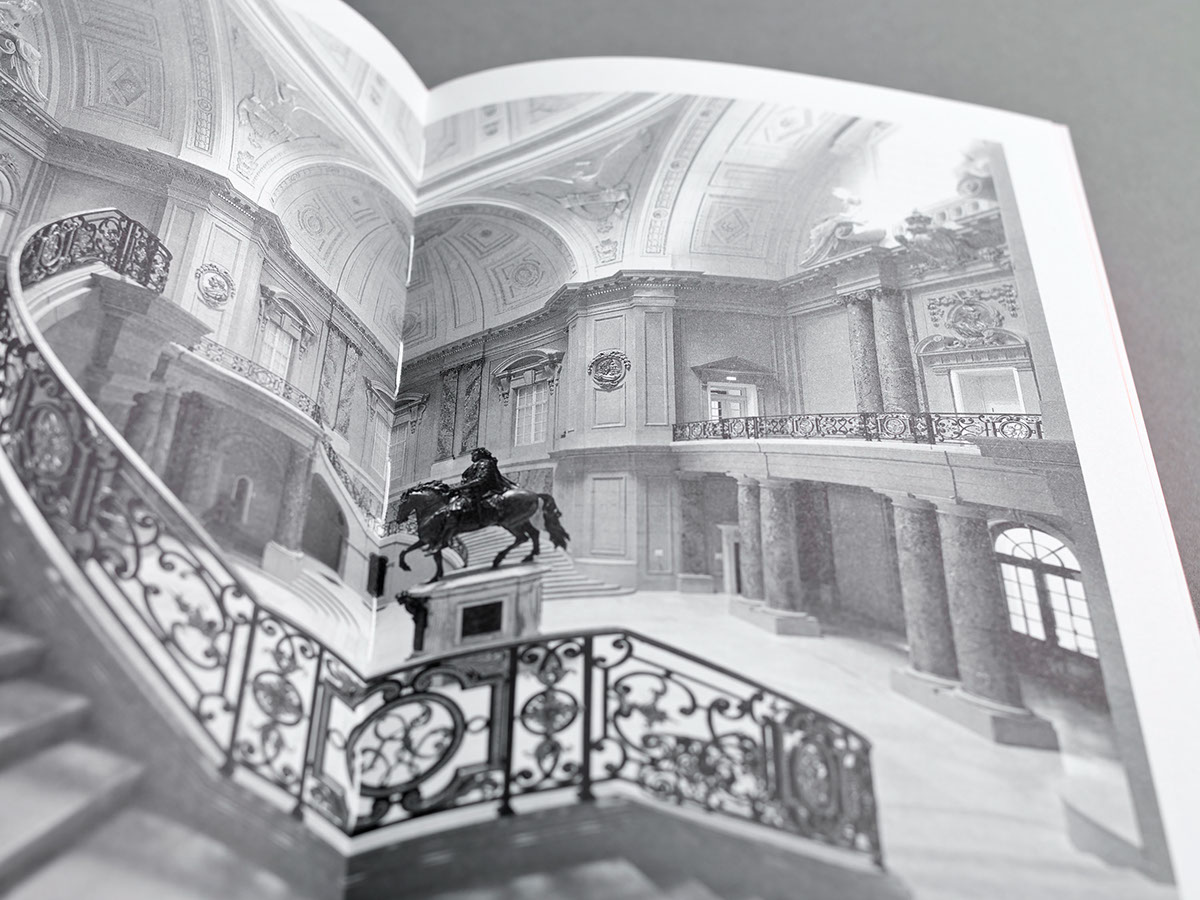
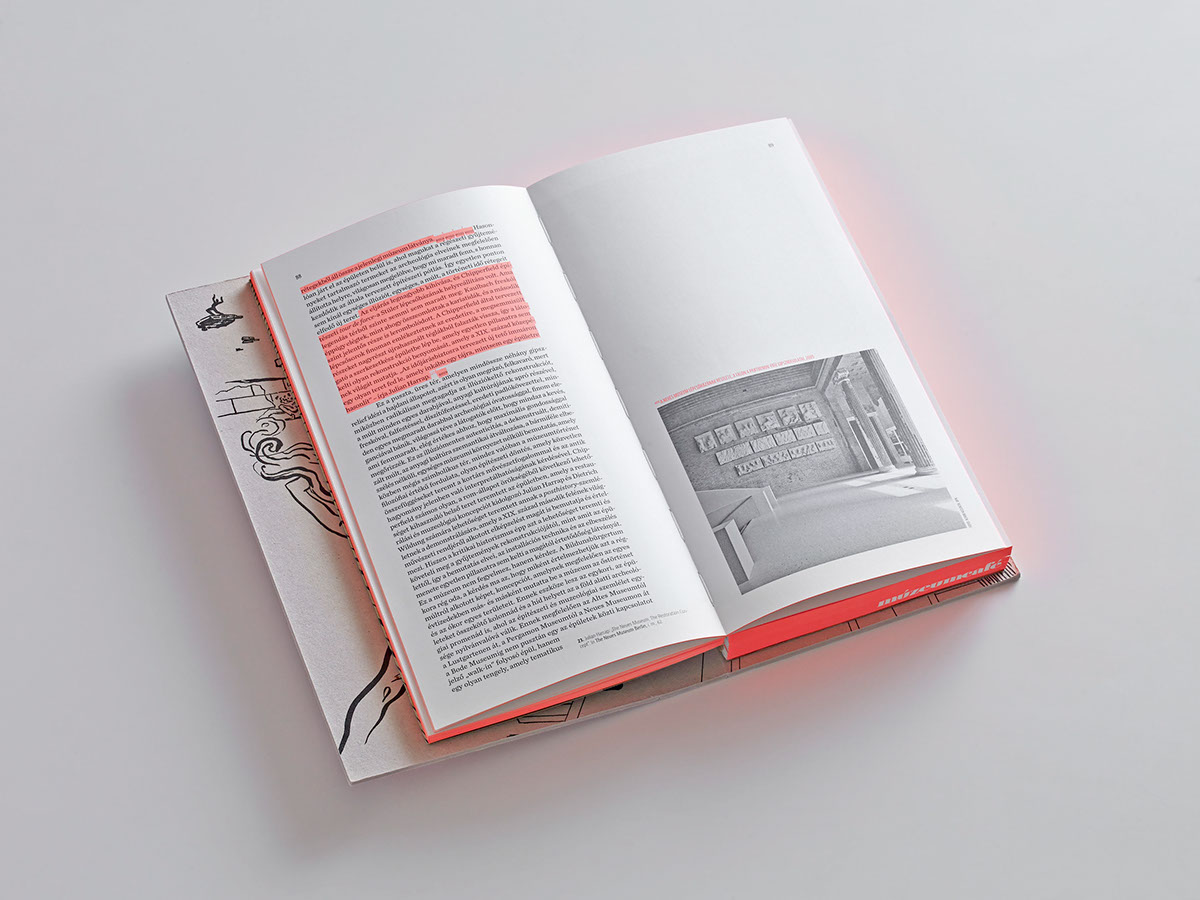

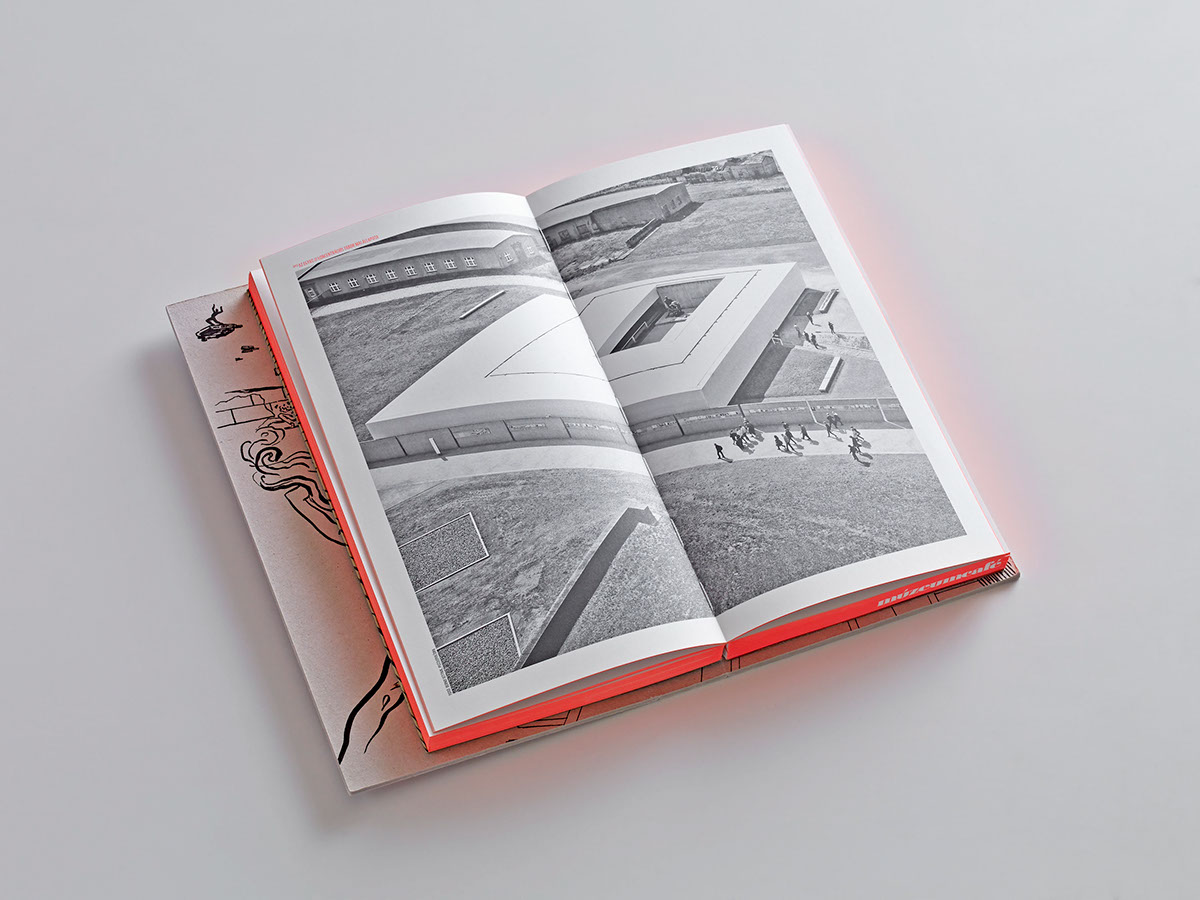
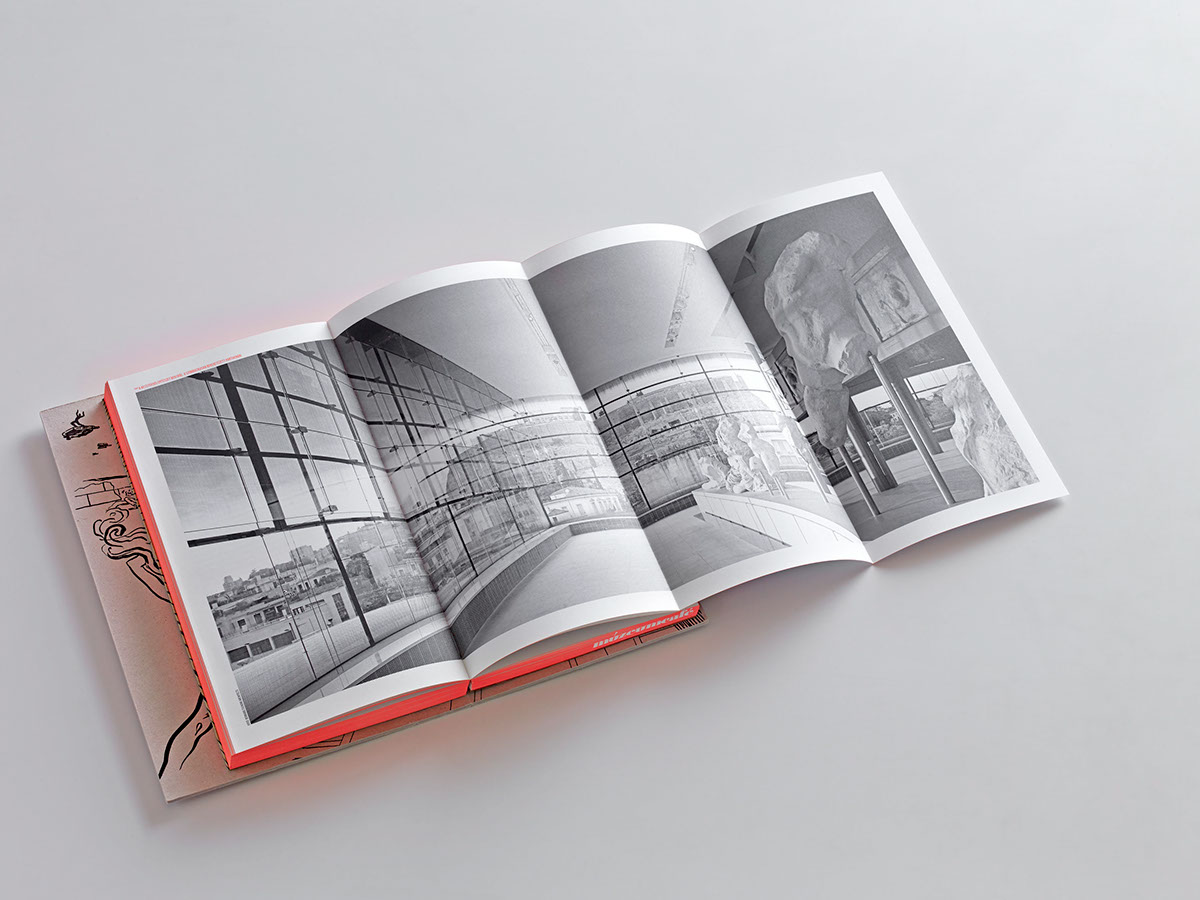
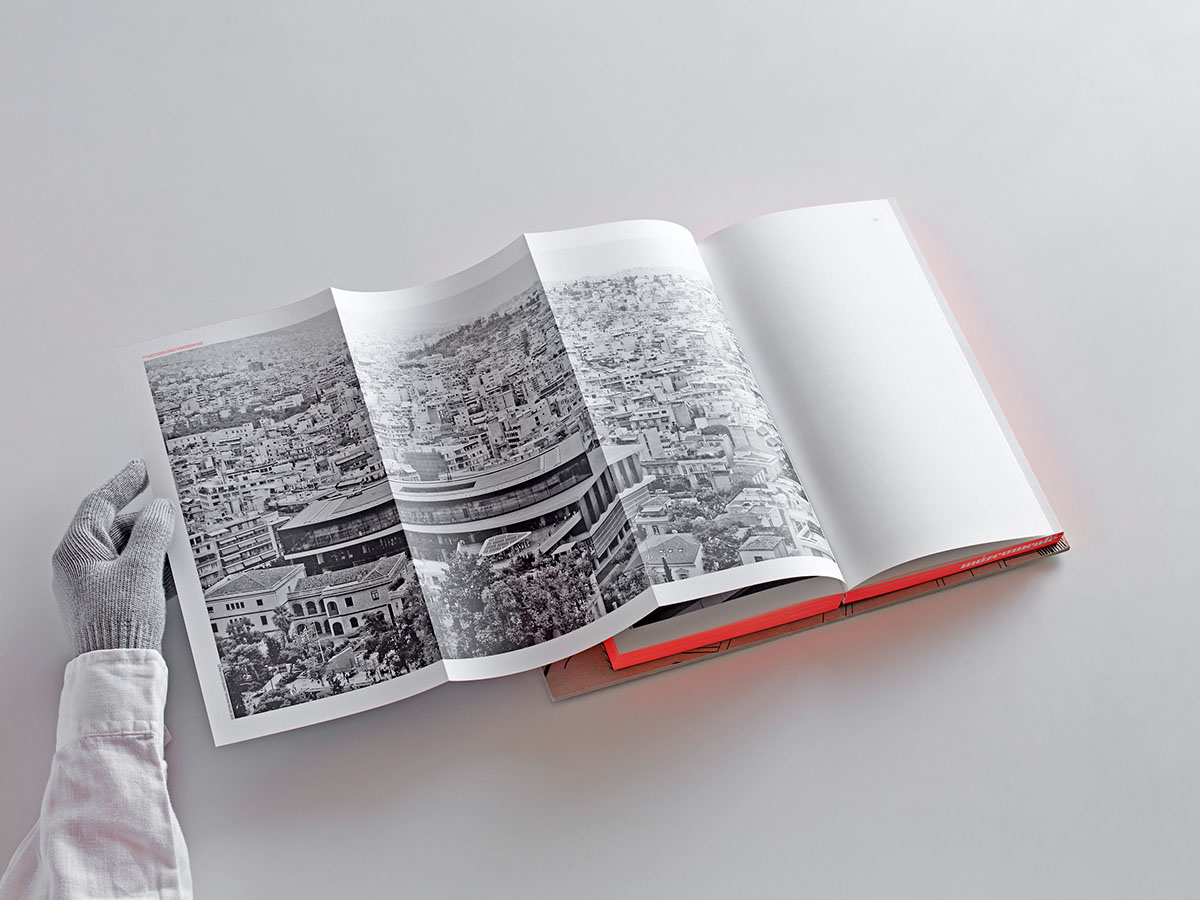
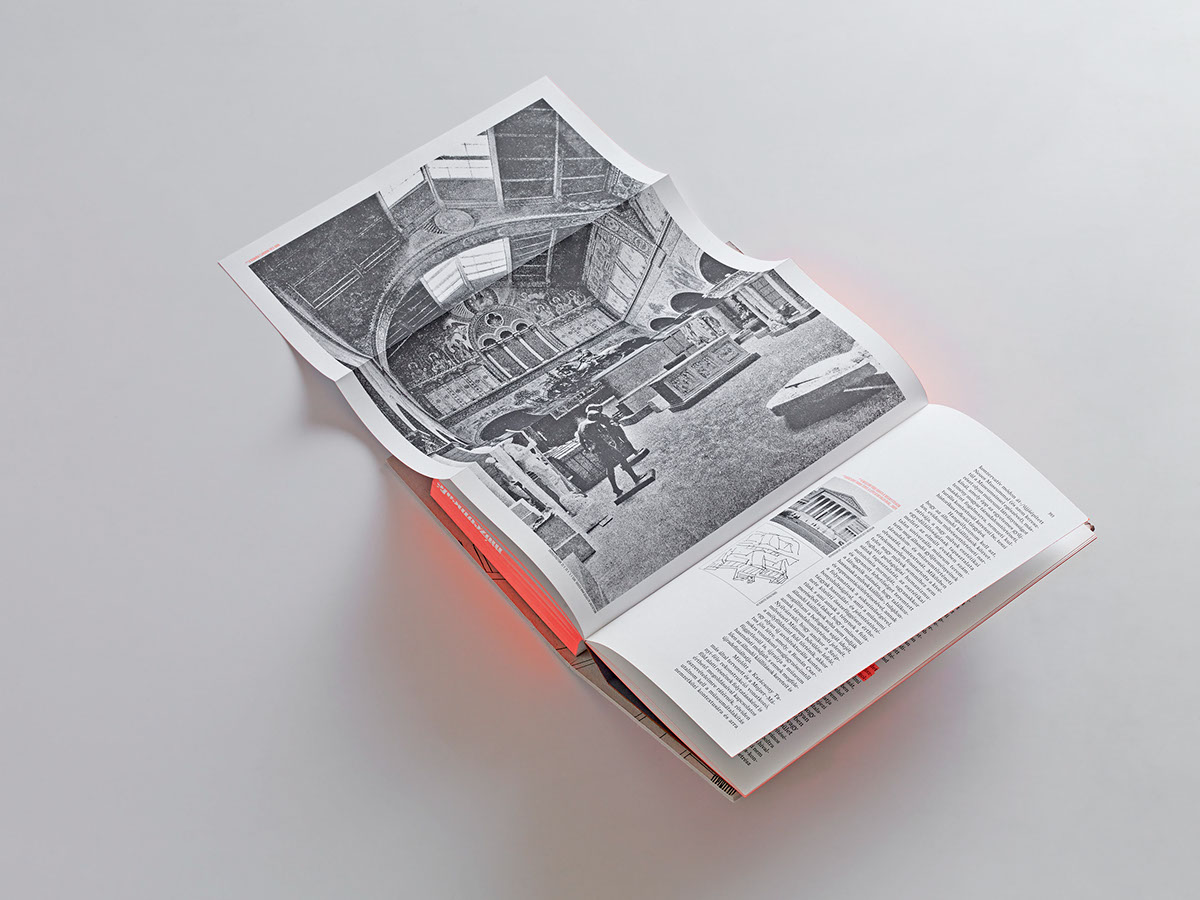

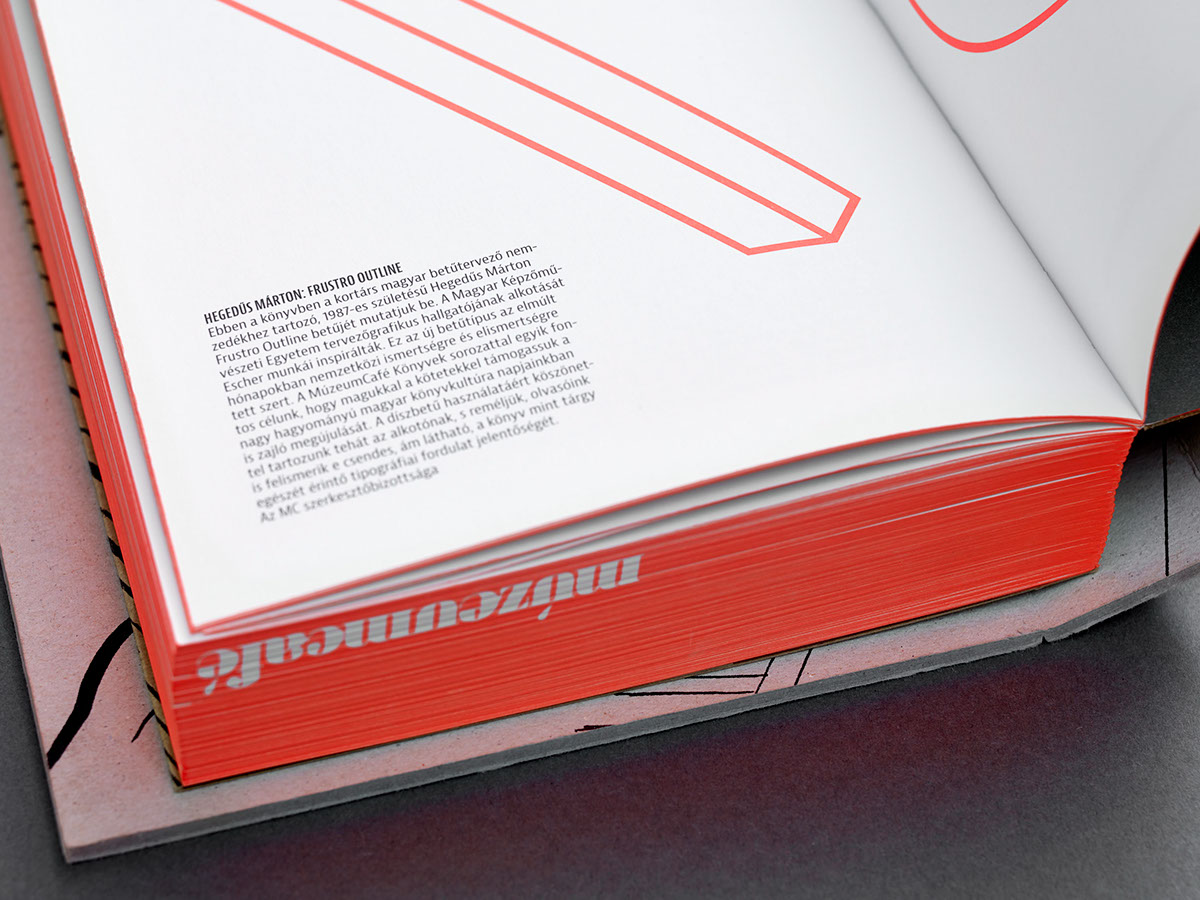
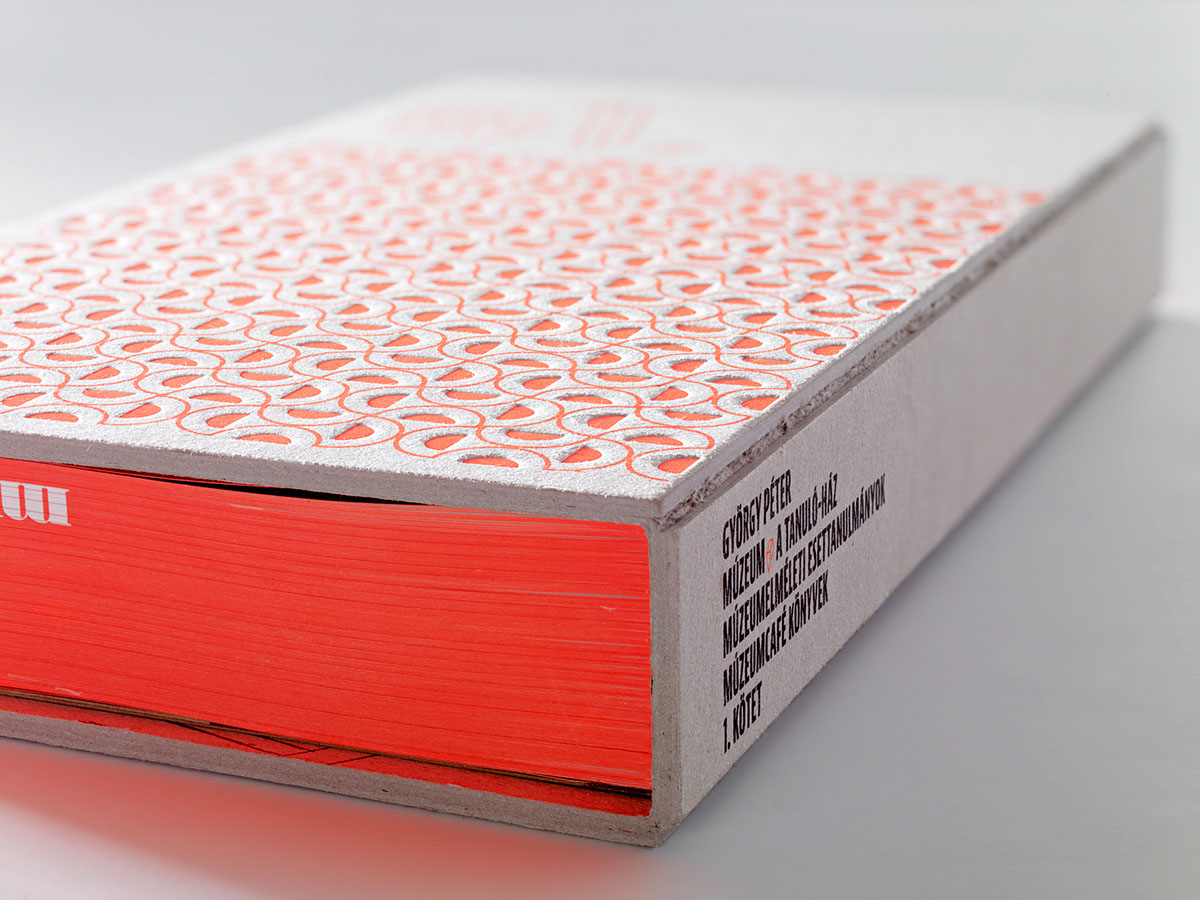

German Design Award 2015
Statement of the jury
"MúzeumCafé Books are published by the Museum of Fine Arts in Budapest. The series also aims to bring a breath of fresh air to Hungarian book culture. The volume Museum – A House for Learning is an elaborate, wonderfully diverse museum book that is nonetheless consistent in its no-frills design, and boasts beautiful typography and an attractive layout. This medium is an excellent choice for such a major work and adeptly takes up the tradition of bookmaking while remaining refreshingly imperfect. This catalogue is a feast for the eyes and illustrates why beyond the world of e-books there is strong justification for splendid printed works."
Jens Grefen, Burkhard Remmers, Prof. Dr. Erik Spiekermann
"MúzeumCafé Books are published by the Museum of Fine Arts in Budapest. The series also aims to bring a breath of fresh air to Hungarian book culture. The volume Museum – A House for Learning is an elaborate, wonderfully diverse museum book that is nonetheless consistent in its no-frills design, and boasts beautiful typography and an attractive layout. This medium is an excellent choice for such a major work and adeptly takes up the tradition of bookmaking while remaining refreshingly imperfect. This catalogue is a feast for the eyes and illustrates why beyond the world of e-books there is strong justification for splendid printed works."
Jens Grefen, Burkhard Remmers, Prof. Dr. Erik Spiekermann
Jurybegründung
"MúzeumCafé Books werden vom Museum of Fine Arts Budapest herausgegeben. Die Reihe verfolgt dabei auch das Ziel, neuen Schwung in die ungarische Buchkultur zu bringen. Bei der Ausgabe Museum – A House for Learning handelt es sich um ein aufwendiges, wunderbar vielfältig und dennoch konsequent und ohne Schnickschnack gestaltetes Museumsbuch mit schöner Typo und ansprechendem Layout. Die Form ist für ein so großes Werk hervorragend gewählt und knüpft geschickt an die Tradition des Buchmachens an. Dabei bleibt sie erfrischend unperfekt. Dieser Katalog ist ein sinnliches Erlebnis und verdeutlicht, warum es jenseits von E-Books eine Berechtigung für großartige Druckwerke gibt."
Jens Grefen, Burkhard Remmers, Prof. Dr. Erik Spiekermann
"MúzeumCafé Books werden vom Museum of Fine Arts Budapest herausgegeben. Die Reihe verfolgt dabei auch das Ziel, neuen Schwung in die ungarische Buchkultur zu bringen. Bei der Ausgabe Museum – A House for Learning handelt es sich um ein aufwendiges, wunderbar vielfältig und dennoch konsequent und ohne Schnickschnack gestaltetes Museumsbuch mit schöner Typo und ansprechendem Layout. Die Form ist für ein so großes Werk hervorragend gewählt und knüpft geschickt an die Tradition des Buchmachens an. Dabei bleibt sie erfrischend unperfekt. Dieser Katalog ist ein sinnliches Erlebnis und verdeutlicht, warum es jenseits von E-Books eine Berechtigung für großartige Druckwerke gibt."
Jens Grefen, Burkhard Remmers, Prof. Dr. Erik Spiekermann
Photos by Csaba Villányi & Zalán Péter Salát


